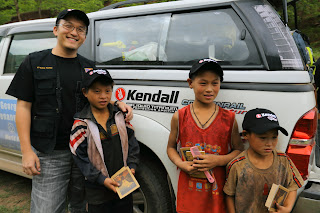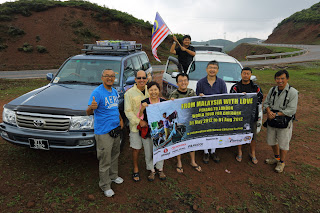Its TOYOTA time! Our Hilux is due for her 5000km scheduled maintenance and there is no better time to do it after the tough drive to Chengdu. We were impressed by the high level of customer and technical services provided to us.
The Kendall Motor Oil Super-D XA 15W-40 that we are using served us well without any sign of slowing down. The engine runs very smoothly with little or almost no vibration.
Since our Hilux was in the workshop, our kind hearted guide Mr John Yang offered to ferry us around Chengdu with his family car. First visits was to Chengdu’s Panda conservatory centre.
The panda "black and white cat-foot" also known as the giant panda to distinguish it from the unrelated red panda, is a bear native to central-western and south western China. It is easily recognized by its large, distinctive black patches around the eyes, over the ears, and across its round body. Though it belongs to the order Carnivora, the panda's diet is 99% bamboo. Pandas in the wild will occasionally eat other grasses, wild tubers, or even meat in the form of birds, rodents or carrion. In captivity they may receive honey, eggs, fish, yams, shrub leaves, oranges, or bananas along with specially prepared food.
The giant panda lives in a few mountain ranges in central China, mainly in Sichuan province, but also in the Shaanxi and Gansuprovinces. As a result of farming, deforestation and other development, the panda has been driven out of the lowland areas where it once lived.
The red panda
The day ended with a courtesy dinner treat by NAVO (our agent in China) Ms Tracy and follow up by authentic Sichuan Mask changing opera show.
Bian Lian (simplified Chinese: 变脸; traditional Chinese: 變臉; pinyin: Biàn Liǎn; literally "Face-Changing") is an ancient Chinese dramatic art that is part of the more general Sichuan opera. Performers wear brightly colored costumes and move to quick, dramatic music. They also wear vividly colored masks, which they change within a fraction of a second.















































